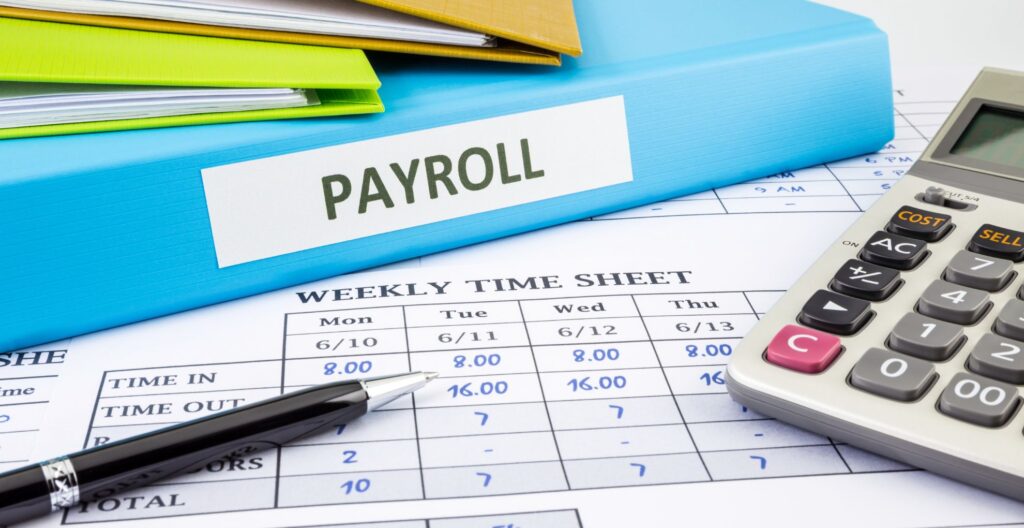When running a business or managing employees, one of the most important tasks is making sure everyone gets paid on time. Payroll systems help with this. But with technology improving, you now have choices: Default Payroll or Auto Payroll. Both options can handle payments, but they work in different ways. Understanding the differences between them can help you decide which one is better for your needs.
In this article, we’ll explain what Default Payroll and Auto Payroll are, how they work, their pros and cons, and which one might be the right fit for you.
What is Default Payroll?
Default Payroll is the traditional way of processing employee salaries. In this method, the employer or payroll manager has to manually approve or run payroll every pay cycle. This means that each time you need to pay your employees, whether it’s weekly, bi-weekly, or monthly, you must log into your payroll software, review the payroll details, and approve the payment.
With Default Payroll, nothing happens automatically. Even if there are no changes to the employee’s pay, hours, or benefits, the system waits for the employer’s approval before processing any payments.
This method gives the employer more control. You can double-check everything before hitting the “Submit” button. But it also means you need to remember to run payroll on time every pay cycle, or your employees could face delays in getting paid.
What is Auto Payroll?
Auto Payroll is a newer, automated way of managing payroll. Once you set it up, the payroll runs on its own without the need for manual input each time. It automatically processes employee salaries based on the information already saved in the system, such as hours worked, pay rates, benefits, and deductions.
If everything remains the same from one pay period to the next, Auto Payroll makes things much easier. It ensures that employees are paid on time without the employer needing to log in and manually run the payroll.
Auto Payroll can also send you reminders or reports after the payroll has been processed. Some systems allow you to make last-minute changes before the automatic process begins, in case something has changed.
The Key Differences Between Default and Auto Payroll
The main difference lies in automation. The default Payroll requires manual effort every cycle. Auto Payroll takes over the job once it’s been set up properly.
With Default Payroll, the risk of missing a payroll deadline is higher. If the person responsible for payroll forgets or gets busy, employees might not get paid on time.
With Auto Payroll, the system takes care of the timing. As long as the data is accurate, you don’t need to worry about missing a payday.
Another difference is flexibility. Default Payroll allows more changes right before each cycle, making it ideal if your payroll details often change—like fluctuating hours or bonuses. Auto Payroll is best for stable pay situations where the same salary is paid regularly.

Benefits of Default Payroll
One of the biggest advantages of Default Payroll is control. Because nothing happens until you approve it, you have a chance to review everything—like hours worked, overtime, taxes, and benefits—before payroll is finalized.
This method is also better for businesses with changing payroll details. If employees often work different hours or earn commissions or bonuses, it’s easier to make adjustments with Default Payroll.
Another benefit is that it’s often more transparent. Since you’re directly involved in the process every time, you may spot errors or inconsistencies that need attention before they affect employee paychecks.
Benefits of Auto Payroll
Auto Payroll shines in its convenience. Once set up, it saves time every pay cycle by handling everything for you. There’s no need to log in, review details, and click “Submit.” This is ideal for small businesses with steady payrolls, such as salaried employees with fixed hours and pay.
It also helps ensure timeliness. Auto Payroll systems are programmed to run on schedule. This reduces the chance of late payments, even if the payroll manager is on vacation or forgets to run payroll.
Another advantage is reduced workload. Business owners or HR managers can focus on other important tasks instead of spending time running payroll each cycle. Over time, this can save hours of work.

When to Choose Default Payroll
Default Payroll may be the better option if your business has:
- Hourly workers with changing shifts
- Frequent bonuses or commissions
- Regular updates to employee pay or benefits
- A preference for reviewing payroll data before each payment
This method is also helpful for newer businesses still getting used to managing employee pay, or those that prefer to keep a close eye on every financial detail.
If your team is small and you don’t mind taking a few extra minutes each pay cycle to ensure accuracy, Default Payroll gives you full control with less risk of automatic errors.
When to Choose Auto Payroll
Auto Payroll is a great choice for businesses with:
- Salaried employees with consistent pay
- Very few changes in payroll data from month to month
- A small team and limited administrative staff
- A need for more efficiency or time-saving
It’s also ideal for business owners who are often busy or forgetful. Since the system handles everything, you don’t have to remember to run payroll on time.
If your company values automation and reliability, Auto Payroll can be a smart solution.
Can You Switch Between the Two?
Yes, many payroll systems allow you to switch between Default Payroll and Auto Payroll. You might start with Default Payroll to get familiar with how the system works. Later, once everything is running smoothly, you can activate Auto Payroll to save time.
Some businesses even use a mix of both. For example, they might use Auto Payroll for salaried employees and Default Payroll for hourly workers. This way, they get the best of both systems.
It’s important to check with your payroll software provider to understand how switching works and whether there are any limits or requirements.

Which Payroll Method is More Secure?
Both methods can be secure, as long as you use a trusted payroll service with strong data protection. Auto Payroll may seem riskier because it runs without direct review, but most systems have built-in alerts and error-checking to prevent problems.
Default Payroll gives you the chance to catch errors before payments go out, which can be helpful if you’re worried about accuracy. But human error is also more common in manual processes, so there’s a trade-off.
Security depends more on the system you choose and how carefully you set it up than the method itself.
Final Thoughts: Making the Right Choice
Choosing between Default Payroll and Auto Payroll depends on your business type, payroll complexity, and comfort with automation.
If your payroll is simple and steady, Auto Payroll can save time and ensure everyone gets paid on time without extra effort. But if your payroll changes often, or if you like to review details personally, Default Payroll offers the control you need.
There’s no one-size-fits-all answer. Think about your workflow, your team, and your level of experience. You can always start with one method and switch later as your business grows and changes.
In the end, the right payroll method is the one that helps you stay organized, keeps your employees happy, and supports your business goals.


